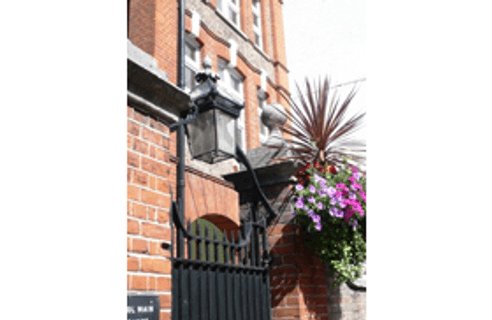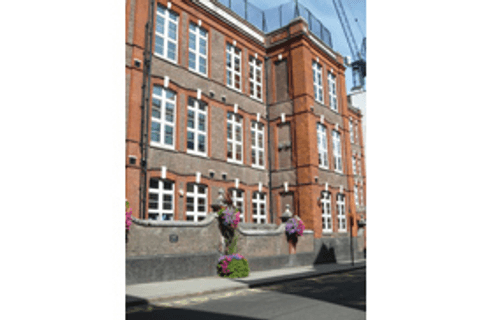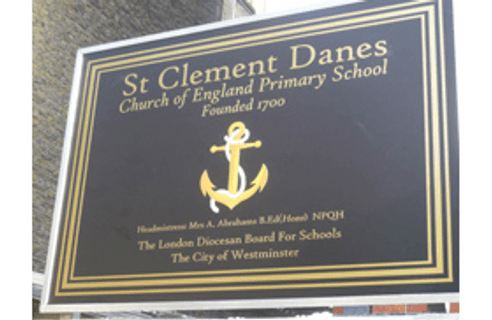Teaching Assistant
St Clement Danes Church of England Primary School
Westminster
- Expired
- Job type:
- Full Time, Permanent
- Start date:
- September 2016
- Apply by:
- 26 May 2016
Job overview
From September 2016 the Governors and Headteacher are looking to appoint a Teaching Assistant
Salary: Band 1, Step 1-2 - £17,733-£18,933 (pro-rata £15,038-£16,055)
Hours: 35.5 hours per week, term time only. Hours: 8.30 am - 4.00 pm – 4 days, 8.30 am – 4.30 pm – 1 day, term time only
St Clement Danes is an upbeat school in the heart of Covent Garden. We are a genuinely diverse, multi-cultural progressive Church of England School with lots to offer. Prospective candidates are required to provide evidence of good literacy and numeracy skills and should have recent experience of working with young children in an educational setting. The role of teaching assistant will have a major impact on the quality of Teaching and Learning.
We are looking for someone who can:
-
Demonstrate successful experience in a primary setting (working across all age ranges) especially regarding the successful management of positive behaviour within a class setting
-
Work as part of the team at the direction of the Class Teacher/Headteacher/SENDCo to support teaching provision and pupils' learning
-
Under the guidance of the SENDCo, to work with individuals and groups of pupils in class, and in the playground, including those pupils with additional educational needs, to help them to achieve their full potential
-
At the direction of Class Teachers, to implement strategies for teaching and learning and help to prepare and organise classroom learning activities
-
Support and deliver the programmes for teaching literacy and numeracy and assist pupils to access the full curriculum. Be familiar with lesson plans, IEP targets and learning objectives
-
Observe pupils' performance and use the systems in place in the school/class to provide the teacher with feedback on pupil progress in relation to provision.
The successful candidate will be highly motivated and able to form excellent relationships with both children and adults. They will have clear communication and interpersonal skills and be able to work effectively as part of a team.
If you are interested in taking a tour of the school please contact Deb Starkey at: dstarkey@stcd.co.uk.
Application details are available from the school’s website.
Closing Date: Friday, 27th May 2016 at noon
Interviews: Week beginning Monday, 6th June 2016
The school is committed to safeguarding and promoting the welfare of children and expects all staff to share this commitment. Applicants must be willing to undergo child protection screening appropriate to the post including checks with past employers and the Disclosure and Barring Service.
St Clement Danes CE Primary School
Drury Lane Covent Garden WC2 5SU
0207 641 6586
office@stcd.co.uk
website address: www.st-clementdanes.westminster.sch.uk
Headmistress: Mrs A. Abrahams Roll: 235 (Nursery – Y6)
About St Clement Danes Church of England Primary School
- St Clement Danes Church of England Primary School
- Drury Lane, Covent Garden
- London
- WC2B 5SU
- United Kingdom
The origins of St Clement Danes School go back to the turn of the seventeenth and eighteenth centuries. Records show that there had been a school operating in the parish of St Clement Danes as early as 1666, although we know virtually nothing about it. Probably it consisted of no more than a handful of students and one schoolmaster. By the late 1690s, a new initiative had been established by the Society for the Promulgation of Christian Knowledge for establishing charity schools throughout the country. Hundreds were founded and within the first eight years, there were 69 schools in the London area with over 3000 children attending. One of the earliest and largest of these was at St Clement Danes.
A committee was formed in October 1699 and a school for boys aged between 9 and 14 was opened on 13 January 1701. A girls’ school followed on 9 July 1702. Both these schools were housed in buildings adjoining the parish graveyard in Portugal Street. And from 1724, there was an Infant School, known as the Horn Book School, included in the foundation. From the first day, the uniform was blue and this colour has been preserved through the generations to our own time.
The schools were then situated in Portugal Street next to the parish burial ground. For the first ten years the boys’ and girls’ schools were looked after by John Durrant and his wife, who were Master and Mistress of the two schools; this couple both died in 1710, very probably victims of an illness brought into the schools by the children.
In 1703, the schools took part in the first annual gathering of the charity schools of London, then at St Andrew’s Holborn and in later years at St Paul’s Cathedral. These services, which were a major event in the London calendar, continued until 1877. The children walked to the cathedral preceded by the School Treasurer carrying a silver staff and this same staff is carried today, at the annual Oranges and Lemons Service.
A small section of the boys were trained in navigation and were intended for a career at sea. Throughout their time at the school, they were trained in mathematics and trigonometry, for they were intended to form future generations of master mariners as Britain’s trade and territory expanded overseas.
In their earliest years, the schools were associated with the High Church/ High Tory politics of Queen Anne’s reign and it is recorded that they displayed sympathies for the Jacobite cause during the Uprising of 1715. The schools had begun as an inspired move to turn the children of the poor into model members of Society. Very quickly, they became a means of providing a free and good education to the children of local householders, or of the servants of the richest inhabitants – not quite what the founders had in mind. In later years, the optimistic vision of the founders, in transforming street urchins into respectable citizens was replaced by a more mundane object of preparing the children for a life as servants in the houses of their social betters.
In the eighteenth century, the schools were open from 7 in the morning until noon and again from 1 until 5pm or whenever daylight ran out, for there was no question of wasting money on expensive candles to light the school. To allow for some relief from work, the schools closed early at 3pm on Thursdays and at noon on Saturdays. And, of course, the schoolchildren reassembled in uniform to attend Morning and Afternoon services in St Clement’s church each Sunday.
The only relief from a constant round of copying or sewing were holidays, then only a few days a year. The greatest of these was New Year's Day, in those days far more prominent than Christmas, and on this day all the children were treated to a special dinner. In 1703, it is recorded that the dinner cost £3 7s 41/2d and that trenchers (i.e. plates) and salts were bought for their use at a cost of 8s 6d. In 1737, we find that the children were given a treat at Easter of plum cakes, rolls, cheese and beer. Though it may seem odd to give the children beer, in days when the water supply could not be trusted, beer was the staple drink of all people as the brewing process would have killed off most of the germs and disguised the taste of the water used in it. Eighteenth century beer was, in any case, far weaker than modern beers so we should not be surprised to read that on occasions the children polished off several pints each.
In 1778 an innovation was made whereby eight girls were to be housed and maintained in the school from the age of 9 “till they reached an age fitted for servitude” at 16. This meant that for seven years they only left the school buildings for their weekly attendance at church. Parents were allowed to visit on for one hour every 3 weeks. Any attempt by the parents to make contact with their children as they walked to church was strictly forbidden and punishable by expulsion.
Over the years, the school has reinvented itself several times over. The original charity schools began to run out of steam at the beginning of the nineteenth century and merged with a new and larger institution, a school founded under the auspices of the Church of England’s National Society.
From 1821, the schools had well over 400 pupils, of which about 60, known as “The Clothed Establishment”, retained the identity of the charity schools as a school within a school. During the nineteenth century, the parish schools absorbed other schools in the locality, a Ragged School in Clare Market and an Infant School in Milford Lane among them, but by the 1870s it was no longer possible to run a sizeable school from subscriptions, bequests and charity sermons. From the middle of the century, the schools had started receiving Government grants and these expanded until the schools became entirely dependent on them. The inevitable conclusion was that the schools should move to being entirely state-funded. Following a new Charity Commissioners’ Scheme of 1875, the charity schools were remodelled into Elementary schools for children aged between 4 and 14. There were still three distinct schools, for boys, girls and infants. To this day the inscriptions over the separate entrances to the present building record how the schools were kept entirely distinct. A merger to form one united school only took place in 1926.
The extensive rebuilding which took place in the parish in the late nineteenth century led to several moves being undertaken before the schools moved into the present premises in 1907. The school was expanded in 1928 with a new wing housing the Housewifery Centre but by the 1930s, numbers on the roll started declining as families moved out of the cramped City centre to housing estates in the suburbs. There was much discussion of merger or closure but the only brief period when the school was actually closed was after the evacuation of the children in 1939. After the worst of the Blitz had passed, children began to drift back to London and a skeleton school, teaching all ages in one class, re-opened in early 1941. By 1942, the roll was back to 212.
A full re-opening of the school took place in 1948; now it became a Mixed Junior and Infants School, taking children only up to the age of 11. This is the formula that has continued to the present day.
Please note that you are wholly responsible for fact checking in respect of the information provided by schools. Please also check for the latest visa and work permit requirements that may apply. Tes is not responsible for the content of advertisements or the policies adopted by advertising schools. Tes asks that all schools follow Tes' Fair Recruitment Policy.




